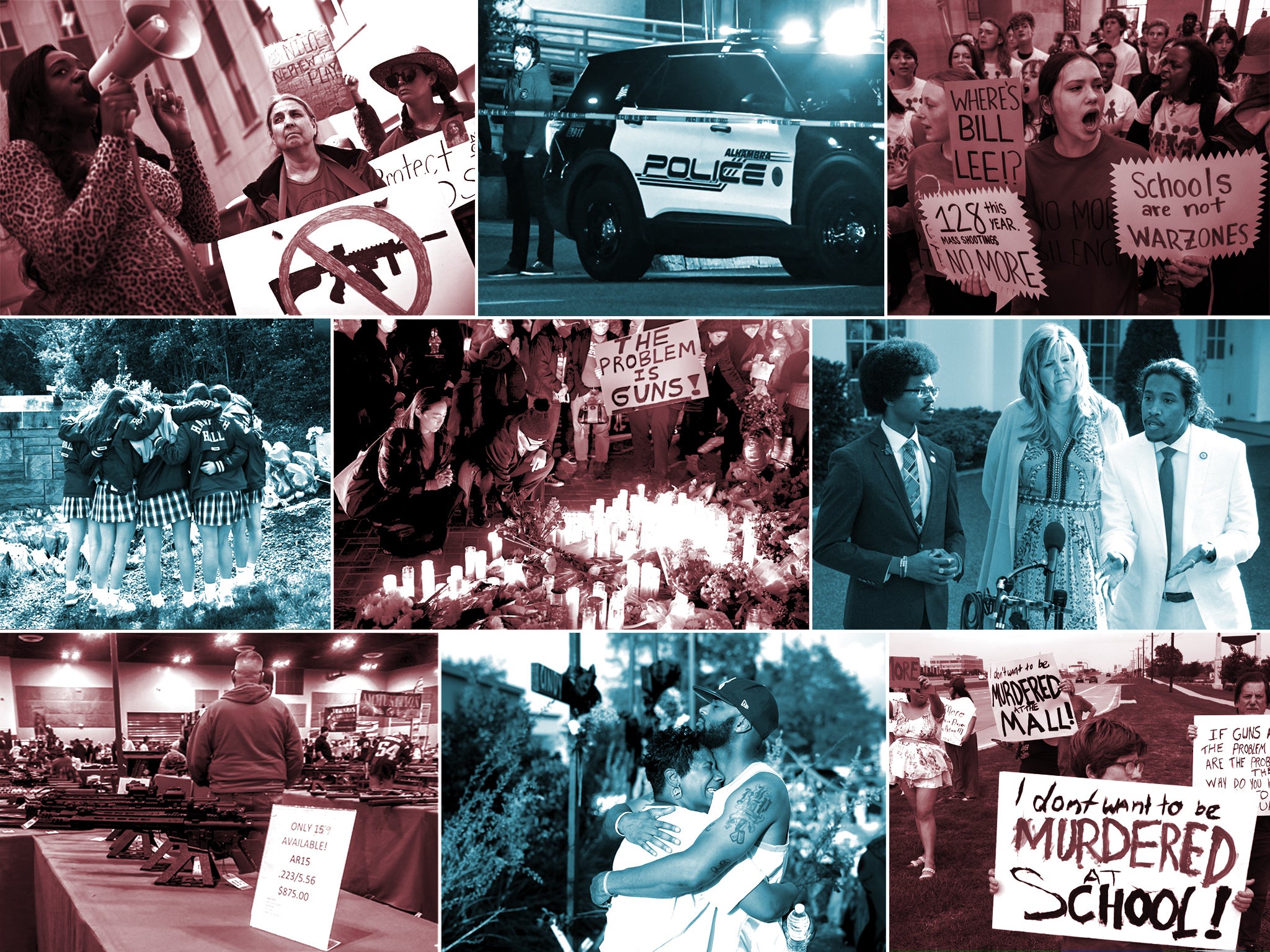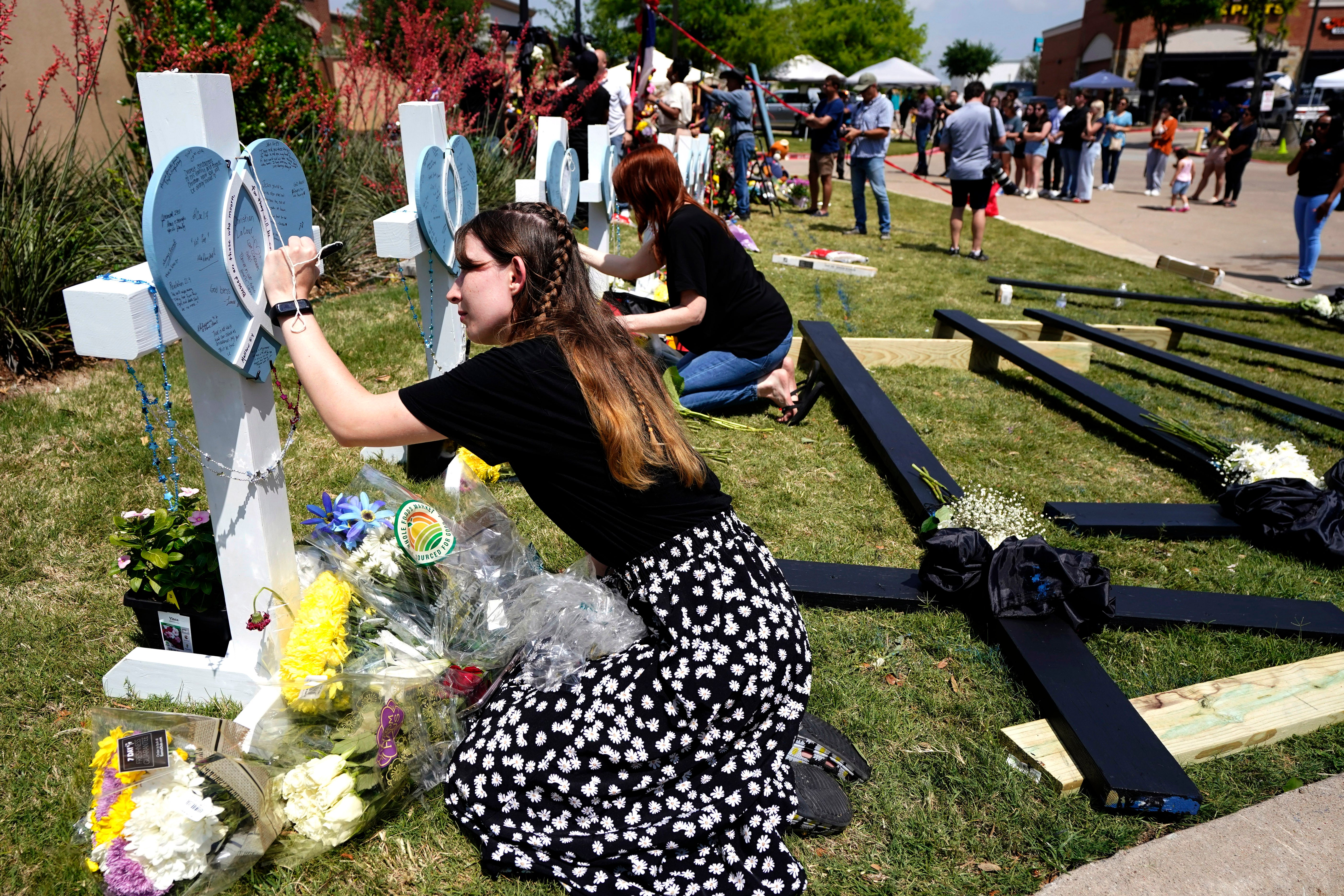America is on pace for its worst year of mass shootings in a decade. What’s driving the record-breaking surge?
The causes of the surge are complex, but there are plenty of solutions on the table if policymakers are willing to adopt them, Josh Marcus reports


Even for a country with more guns than people, the level of mass shootings in the US in 2023 has been shocking. The incidents have ranged from campus shootings, like a massacre inside a Nashville elementary school that killed six in March, to a mass shooting at a mall in Texas this month that killed eight, carried out by a neo-Nazi.
As of 19 May, according to the Gun Violence Archive, there have been 227 mass shootings in 2023, defined as incidents in which four or more people are wounded or killed, not including the shooter. That’s nearly two mass shootings per day so far this year.
This year could be the worst for mass shootings in a decade, according to an analysis of Gun Violence Archive data by The Guardian.
“Unfortunately I worry we’re becoming a bit numb to it,” Professor F Chris Curran, director of the Education Policy Research Center at the University of Florida and an expert in school shootings, told The Independent.
“When someone talks about an incident of gun violence, it’s like, ‘Which are you talking about?’ There’s been so many in the news headlines. I don’t know what that means in terms of where policy goes,” he added. “It’s certainly at the forefront of attention in the media and among policymakers. Unfortunately we run a risk of reaching a place where it feels like the new normal and it becomes less shocking to us. That may slow down progress when it comes to stopping gun violence.”
Gun violence is a complex phenomenon, and experts say unpacking the causes of the recent spike requires a multi-faceted approach.
On a very basic level, there has been a surge in gun buying, which means an increased potential for deadly violence.
Throughout the pandemic, Americans raced to gun stores. Between January 2020 and April 2021, the number of first-time gun owners more than doubled compared with 2019, according to one survey. During this period, weapons like semi-automatic handguns, more likely to be used outside of recreational contexts, began outselling rifles, which are more commonly used for hunting.
Then there was massive personal, social, and economic dislocation of the pandemic, further driving root issues that can lead to violence.
The rest of the world was also struggling with these same issues, of course, but only the US saw this kind of rise in mass shootings.
“A lot of the unrest and instability we have across the world. This was a global pandemic,” Vicka Chaplin, of the University of California-Davis Violence Prevention Research Program, told The Independent. “Assault, that happens across the world. Where the US stands apart is easy access to so many firearms. That’s the difference that makes the violence lethal.”
And, Ms Chaplin urges, it’s important to remember that there’s even more gun violence in America than the sort of mass shootings that make the headlines. These incidents, while horrifying, account for only a small portion of the vast number of Americans killed by guns each year. Over half of gun deaths in the US were suicides, according to the most recent CDC data.
“What’s often not covered is that there are so many more shootings and other forms of gun violence, that are really also impacting families and communities every single day,” she said. “In 2021, nearly 49,000 Americans died by gun violence. For every one fatality, there’s an estimated two people who are shot and survive...This is a collective experience at this point.”

America’s response has been just as multi-faceted as the problem of gun violence, encompassing both protest and laws designed to make guns even easier to access.
The onslaught of gun violence has galvanised young activists and lawmakers like the so-called “Tennessee Three,” a group of state legislators who became national figures after they were temporarily kicked out of the Tennessee House of Representatives for joining in a protests at the capitol following the Nashville shooting.
This activist energy has been felt on campus too.
Joseph Kesto, a Michigan State pre-med student, told The Washington Post this month he added a policy major and became an anti-gun violence organiser, following a shooting at the university in February that killed three people.
“That shooting kind of reshaped my entire life,” he told the paper.
Other, Republican-led states, where per capita rates of gun ownership and death tend to be higher, have moved in the other direction, with states like Florida joining the more than half of US states where it’s legal to carry a concealed weapon without a permit.
Despite the political headwinds, experts say states already have the tools backed by evidence to reduce gun violence, from safe-storage laws, to red flag provisions that temporarily seize weapons from people at risk of committing violence. Pandemic-era spike aside, states like California with such provisions have bucked trends of increasing gun violence by adopting this approach.
According to Ms Chaplin of UC Davis, opponents and supporters of gun ownership are motivated by a desire for safety. The latter camp, in some cases, hold a mistaken belief that having a gun inside the home decreases the risk of being a victim of gun violence. But that common ground can still be an opportunity for reform.
“Mass shootings, gun violence, broadly, they’re complex issues with complex causes,” she said. “They require a complex solution, but that’s an opportunity. It leaves a lot of options for intervention and prevention. There are areas where there is strong agreement and there are areas where it’s really polarising, but ultimately I think there is hope on this.”
Join our commenting forum
Join thought-provoking conversations, follow other Independent readers and see their replies
Comments


Bookmark popover
Removed from bookmarks